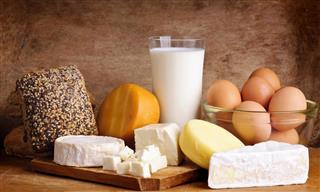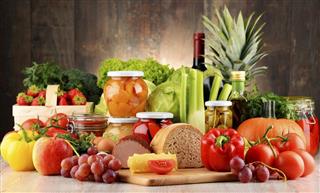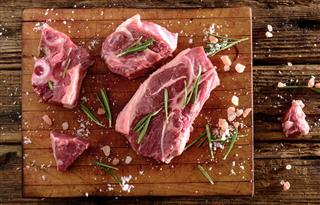
Gallbladder is removed in the case of inflammation or developed abnormalities. The common treatment option is surgery. However, the diet that needs to be maintained after the gallbladder removal includes lean meat and fibrous fruits and vegetables. Keep reading for details.
Gallbladder is a small organ but it is an important part of the digestive system. It aids the concentration of bile in the liver and helps digestion. The organ is located in the concavity of the gallbladder fossa, within the liver. Fully distended, it never measures more than 10 cm in length. The 4 cm diameter is cut across the fundus, neck and body of the organ.
The gallbladder has a columnar epithelial lining, with connective tissue beneath. Below this tissue there is a muscle that reacts to the peptide hormone, cholecystokinin. The gallbladder stores bile and releases the same when fatty food components enter the digestive tract.
This process helps to emulsify and neutralize fats. Bile is released in the small intestine and if the gallbladder is removed, bile will continue to drip in the intestine from the liver. This may cause some problems in the digestive system. But, it can be controlled by following proper diet which we will discuss in the following paragraphs.
About Gallbladder Surgery
Gallbladder surgery is suggested for the removal of the organ in the following conditions.
- Gallstones develop within the gallbladder or along the biliary tract
- A condition referred to as Porcelain gallbladder is observed
- Gallbladder cancer
- The organ does not function normally, a condition also called biliary dyskinesia or gallbladder disease
Symptoms of an infected gallbladder include
- Pain in the region, after meals
- Breathing problems (sometimes)
- Nausea and vomiting
- Indigestion
The removal of the gallbladder is either by cholecystectomy, the open surgery method or laparoscopy. In the case of cholecystectomy, the gallbladder is removed through an incision.
The surgery is always performed under general anesthesia. The operation involves a cut and seal-off, of the bile duct and blood vessels that lead to the gallbladder. Once the gallbladder is removed, a cholangiogram is conducted by introducing dye into the bile duct. This procedure helps the surgeon to identify remnants of stones, if any are left behind. The surgery takes about an hour.
In laparoscopic surgery or minimal invasive surgery, the incision is never more than 1.5 cm. The surgery within the abdominal cavity is part of the endoscopy surgical procedure. The surgery uses the sophisticated laparoscope. This instrument is either a telescopic rod lens connected to a camera or a digital laparoscope, which is charge-coupled.
There is a fiber optic cable system that is attached to a halogen source light that is lowered to illuminate the region within the abdominal cavity. Carbon dioxide gas is used to insufflate the abdomen, to create a viewing and work space.
Diet after Gallbladder Removal
There are bound to be temporary digestive issues with digestive health, post surgery. This is mainly because of the difficulty faced by the body to dissolve and emulsify fats, after the gallbladder removal. Unmonitored, high-fat intake after the surgery, could result in diarrhea or puffiness in the region. Hence to avoid such conditions, increase the intake of high fibrous food like brown rice, whole grain bread, and vegetables high in fibers.
Avoid dairy products as they can cause diarrhea and can worsen the condition. Water plays a very important role in keeping the process of digestion under control. Drink plenty of water but make sure it is filtered. Avoid alcoholic drinks and even carbonated beverages. Following is a small list of the food to include and avoid from your post surgery gallbladder diet.
The diet should include:
- Lean meat, skinned fish and chicken
- Egg whites
- Whole grain products
- Skimmed milk
- Low fat cheese, yogurt and spreads
- Soups
- Salads (Fibrous fruits and vegetables)
- Grilled fish and chicken
- Legumes
- Fresh fruits (without added sweetener)
Foods that need to be avoided:
- Fried foods
- Spicy food
- Cereals, seeds and nuts
- Baked beans
- White sugar and white flour
- Broccoli
- Cabbage
- Brussels sprouts
- Cauliflower
- Peanuts
- Pastries
After the removal of gallbladder, it is very essential to maintain a low carbohydrate and high protein diet. It is also advisable to adopt six smaller meals rather than three large ones. Without the gallbladder, digestion does become difficult and hence this shift in the diet plan is required. A liquid diet for some time is ideal.
However, if it is not completely possible, then you could consider semi liquid meal components that are non-fatty and low in carbohydrate, essentially. Avoid products which contain caffeine, such as tea and coffee as they can hinder the process of digestion. Exercise daily for at least 30 minutes. Take care of the food you eat and you will see how your body gels up with the food even without the gallbladder.





